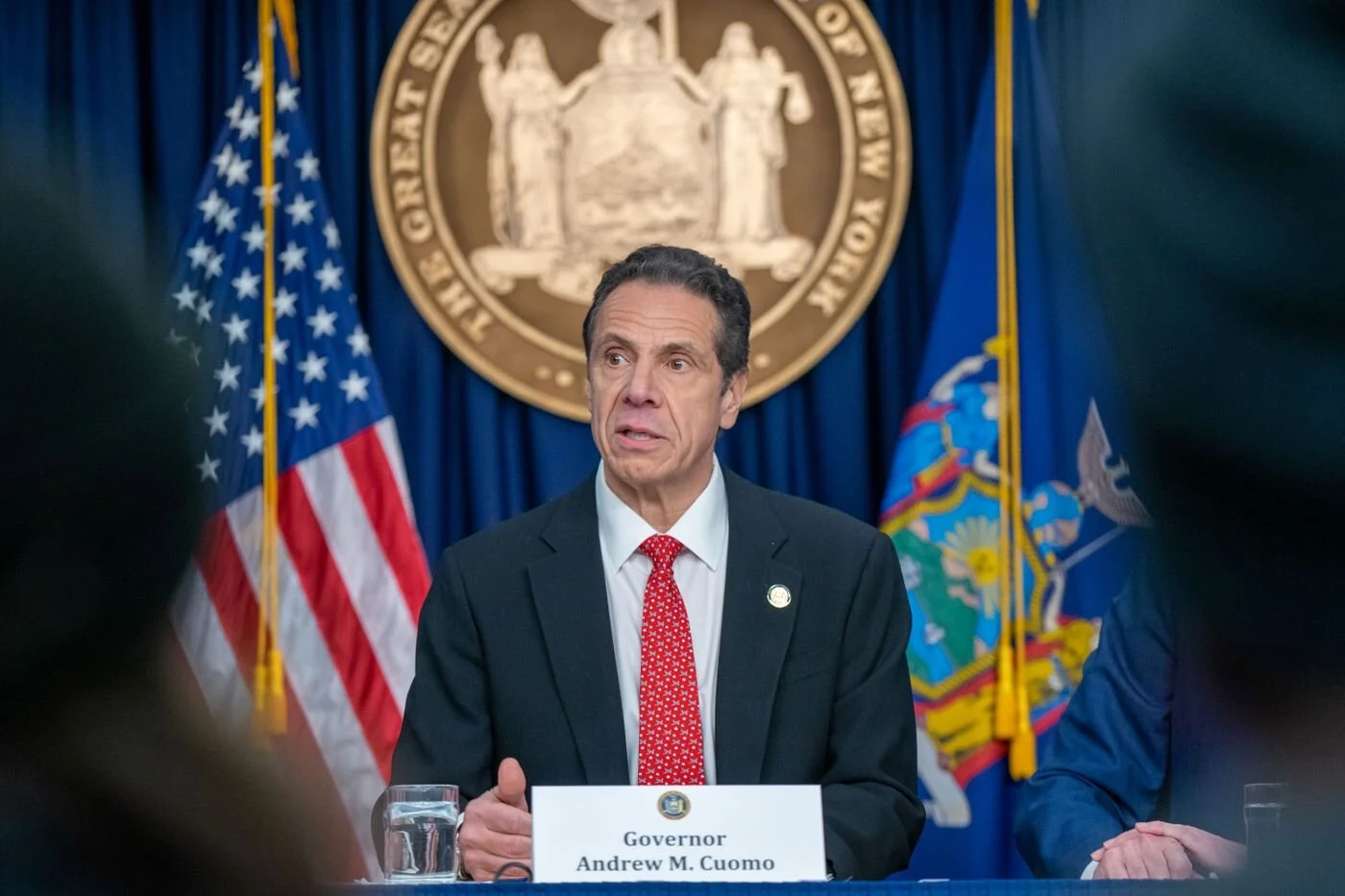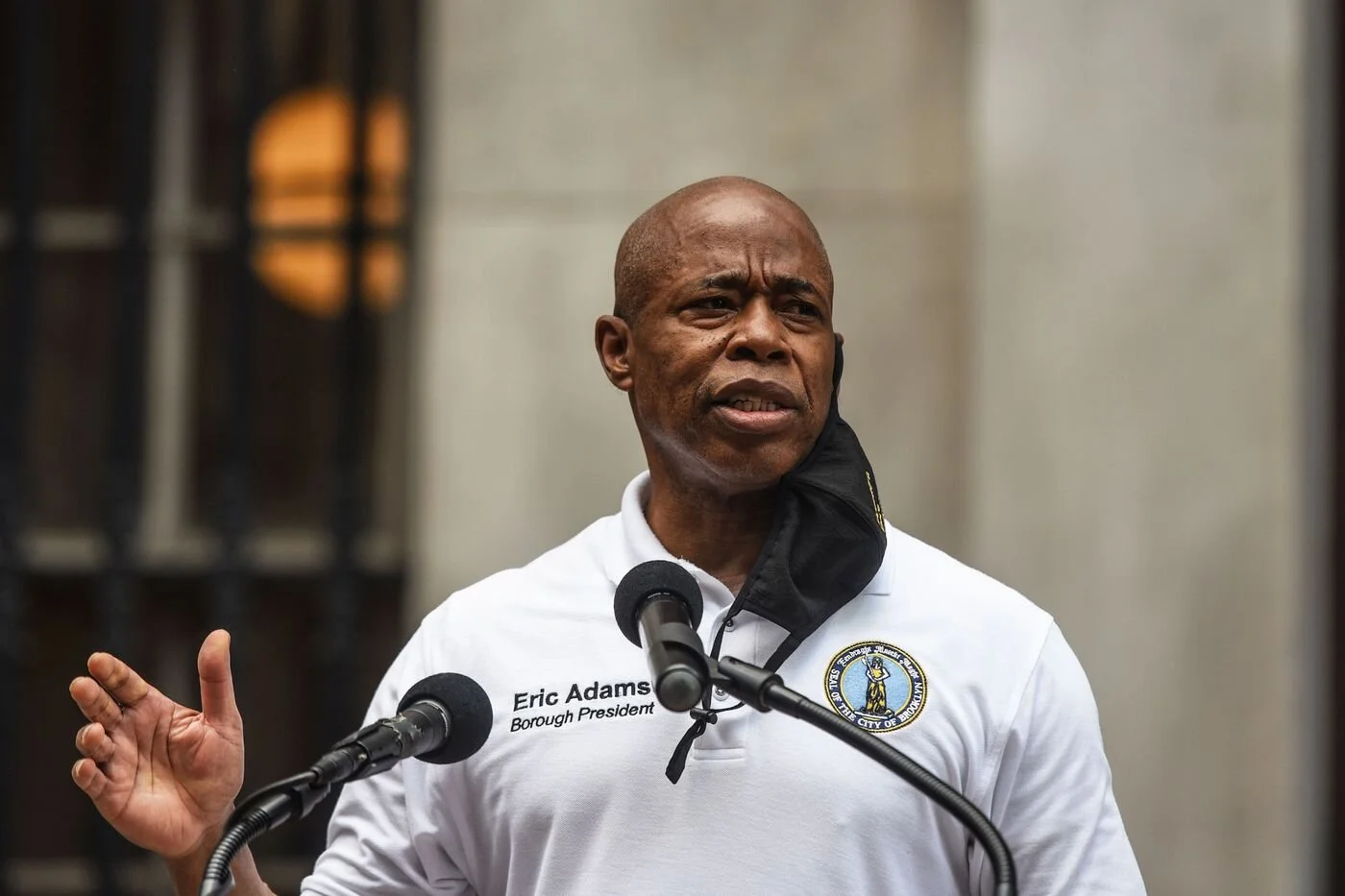“When a Bear Is Charging at You, If You Are Not Energized, You Are Dead.”
Published March 13, 2020 in
There are certain things you are Very Much Not Supposed to Do at times like this, and Andrew Cuomo was doing them. He was shaking hands. He was touching his face. And not in index finger on the temple kind of a way, but full on in the way of a very tired and very frustrated person. He squeezed the bridge of his nose. He rubbed his eyes with his palms. The governor was camped in a conference room in Albany on Tuesday afternoon, just as down in Washington, D.C., Donald Trump was telling reporters, “Just stay calm, it will go away,” while his top health official was saying that in point of fact Americans should prepare for a long and debilitating crisis. Cuomo was on the phone, calling various hospital administrators and health officials from around the state, trying to figure out how soon they could get a coronavirus test up and running, and running a finger across his forehead in a universal sign of nervousness.
The mood in the room, however, was light. Speaking to one health-care executive, Cuomo adopted (or tried to at least) the Irish brogue of the person on the other end of the line. “I’m from County Cork, yea. I’m coming right there to play footie.”
Quickly, he would cut to the chase. New York by that afternoon had passed 200 cases, and Cuomo was trying to prod the federal government to let the state administer its own tests. He calls it “peeling the onion,” but it is more like a dicing.
“Who has the authority to do this?,” he asked. “Do you? You just said you did.” And, at another point, to a different administrator in a series of calls that take up most of the afternoon: “I don’t want it get caught up in the bureaucracy. That would take months.” Or again: “You have to strip it down to what it actually is, and then you have to get it done. If we do this right it would be a big deal.”
It is hard not to notice in the midst of all this war-gaming of a crisis, that Andrew Cuomo is happy. He seems to have an energy, a spring in his step that the usual Albany back-and-forth sucks out of even the most hearty souls.
“I’m not happy,” he clarified when the question is put to him later in his office. “I like opening airports. I like cutting ribbons at construction sites. I like passing legislation. This isn’t happy, it’s adrenaline. When a bear is charging at you, if you are not energized, you are dead.”
Cuomo will forever remain a difficult figure to like: a cravenly political governor whose significant liberal accomplishments have come about through mercurial wheeling and dealing. He doesn’t aim to inspire, he aims to deliver, preferably with the other side’s throat cut along the way. But in moments like this, when the world is gripped by panic and other parts of the government are flailing, Cuomo is in his element. Every day it is something new. A containment zone around New Rochelle. Wrestling new powers from the Legislature to combat the crisis. And, as ugly as it looks, getting state prisoners to manufacture hand sanitizer because somehow the entire country has run out.
This isn’t wrangling with the legislature over Medicaid reimbursement rates or property tax caps. But Cuomoism from the get-go has been about proving that government can solve concrete and material problems. Do that—fix the roads, build the schools, and clean up after disasters, whether it be Hurricane Sandy or snowstorms in Buffalo or taking over the rebuilding in Puerto Rico—and you can convince people that the rest of the government they pay for can solve other, more entrenched problems.
Coronavirus, the governor believes, is not that kind of problem. Yes, it’s a virus, and it’s highly contagious, but it can be isolated and contained and it will run its course. His frustration is aimed at the federal government, which is operating like a shambolic merchant of chaos and so has made a manageable crisis into an unfolding, cascading series of disasters.
And so first you need to test, Cuomo told me on Tuesday. As it stood, if someone felt sick, and if epidemiological investigators determined that person had contact with someone with the disease, a State Police cruiser would come and pick up a sample and drive it to a lab in Albany. At most, it could test 200 samples a day. “Two hundred! It’s nothing. That’s covers just the neurotic people in my own family,” he said.
The governor has been through this before. He spent eight years at the Department of Housing and Urban Development, dealing with one disaster after another, then in New York it’s been the same thing: floods, blizzards, hurricanes. He still remembers a time 25 years ago, in Florida, when a state trooper was directing traffic from people fleeing a hurricane, and one driver wouldn’t heed his stop sign, just kept driving, knocking the trooper down and nearly running him over.
“The panic is the problem. ‘I have to get home, my kids are at home, I have to get out of here, a hurricane’s coming.’ Whether it’s a fire, a flood, whatever it is. Here the panic, the anxiety, it’s people getting afraid to get on a public bus. They could be afraid to get on a subway. They could be afraid to be in Manhattan. The panic could be more destructive than the virus.”
And he credits the federal government’s response with fueling at least some of the panic. “This one says this, that one says that, Trump says everything’s fine, this one says no it’s not, this one says we’ll have a vaccine tomorrow, the other one gets on and says it’s going to be a year,” Cuomo said, adopting the voice of the confused television viewer. “Now I’m nervous. It sounds like a science-fiction movie. Who am I supposed to believe? What is the truth?”
“People have to understand this is not a death sentence,” he added. “It’s just not.”
Conversations about the virus began internally late last year. In February, once it was very clear that the disease was coming here and that there would be almost no federal response, Cuomo gathered fifty advisers — health officials, lawyers, government operations specialist, health insurance regulators — to game out what was coming and how the state should react. Would they need to quarantine people? Under what legal authority? How would they enforce the quarantine? And so on down the line, everything from how to transport sick patients to what this would mean for the subway and rail networks in the state. Even before the first case was announced, he had wrested special powers from the Legislature to deal with the coming crisis. This week, the administration set up a war room, filled with maps and white boards, coordinating on tasks; like getting three testing machines that were manufactured in Singapore shipped to New York in the fastest manner possible.
“You know how when you get into a car and sometimes it says ‘operating mode’ and ‘sport mode’ and ‘all-wheel-drive mode’?,” he said to me on Tuesday. “Well, government has to shift the gear in a situation like this. You go into -emergency-management mode. Emergency-management mode is a totally different mode then normal operating mode. It’s not agency by agency; it’s a swat team of senior officials who come together. You mobilize the entire government.”
On Wednesday, Cuomo watched Trump’s halting Oval Office address, the one that made it clear, if it wasn’t already, that this was something Trump had definitely not signed up for when he ran for president. Immediately after, he appeared on his brother Chris Cuomo’s CNN show, slamming the president’s speech. “This is a massive governmental mobilization that you need a real government to handle. This is not political. You’re not going to do this on Twitter. This is government, baby,” he said on CNN. “We’re beyond wash your hands, my brother. There is going to have to be major shifts in society short term.”
By the next day, he was in his office, talking to lawyers, talking to leaders of business. He was preparing for those shifts. Broadway theaters were going to go dark. Bars and restaurants would have to operate at 50 percent capacity. The landscape was changing dramatically: Even the testing issue had by then become largely irrelevant, he said, just two days after he told me it should be the state’s priority. It was now time to prepare for a strain on the health system. He put an order in that forbade people from visiting their relatives in nursing homes. He asked for retired and former doctors and nurses to report for duty. School was still in session even as some states closed entire school systems, because doctors and nurses with children were needed on the job. Elective surgeries were ordered to be delayed. They had been keeping the fires contained by dousing the field with water, but the fire line was certain to be broken. What had happened in China, and South Korea, and Italy was certain to happen here, too, but we could be ready.
And there was shift too, he thought, coming in politics. Cuomo had been challenged in 2018 by Cynthia Nixon, the star of Sex and the City who had not a day’s worth of experience in government but who still managed to get a third of the vote from him in the Democratic primary. In the midst of the most hectic and terrifying week of his governorship, he could not resist getting in a dig:
“Government, presidential elections, it was tweets, it was all one-liners, it was all personality, character, celebrity. That’s what politics had become. And all of a sudden you have changed the lens,” he said while an aide brought him a large Dunkin’ Donuts coffee. “Government is about real capacity and real consequences and really knowing what you’re doing and real leadership. Elect the people who know what they’re doing, because you elect somebody because they are a celebrity, or because they have a great slogan, and then you ask them to perform. What do they say?’ ‘I never told you I could perform. I told you I was good looking. I told you I tweeted a lot. I told you I had a great slogan. I never told you I was competent.’ And by the way, it’s really serious. It’s not about celebrity and slogans. That is a stark shift. This is government at wartime.”







